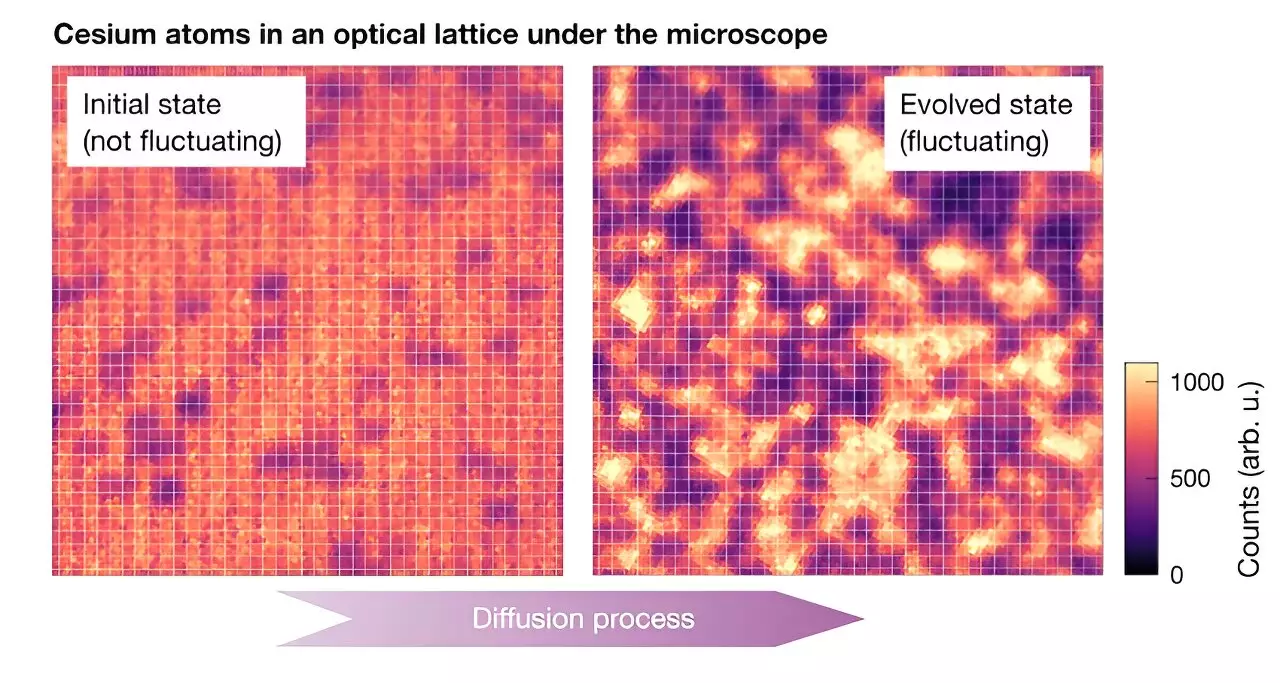Recent advancements in quantum physics have offered researchers new tools for understanding the complex dynamics of large quantum systems. A collaborative study conducted by esteemed institutions including Ludwig-Maximilians-Universität, Max-Planck-Institut für Quantenoptik, and the Munich Center for Quantum Science and Technology, along with the University of Massachusetts, has produced compelling findings published in Nature Physics. This study focuses on the equilibrium fluctuations observed in substantial quantum systems, revealing promising pathways towards simulating and predicting the behavior of these intricate systems.
The state of quantum systems can be a daunting field for researchers, particularly in terms of computational simulations. Julian Wienand, one of the co-authors of the study, highlighted the difficulties presented when attempting to simulate the movement of multiple particles. While the underlying physics governing the interactions among particles is known, the sheer number and complexity of these movements can overwhelm computational resources. This limitation has prompted physicists to explore alternative approaches, one of which is hydrodynamics—a pivotal framework that allows for a more manageable overview of dynamic particle systems.
Hydrodynamics provides an innovative route for simulating interactions in chaotic systems by allowing researchers to treat particles as a uniform density field. Wienand explains that when a system is chaotic, it tends toward a state of local thermal equilibrium, which simplifies the mathematical representation of the interactions among particles. By modeling the system’s evolution as governed by differential equations, physicists can avoid the computational burden associated with tracking each individual particle. The development of fluctuating hydrodynamics (FHD) takes this concept further by introducing the impact of small-scale fluctuations in the quantum realm, essentially treating these fluctuations as random ‘white noise’ that must be integrated into the broader hydrodynamic framework.
Fluctuating hydrodynamics serves as an extension of classical hydrodynamics, which has long offered insights into thermal fluctuations in various physical systems. The intriguing contribute of FHD lies in its ability to seamlessly integrate small-scale fluctuations, suggesting that the evolution of quantum systems can be effectively described using a few key quantities, including the diffusion constant. The researchers aim to determine if principles established for classical systems apply equally well to complex quantum systems—where the behavior of particles can involve counterintuitive phenomena such as entanglement.
To validate these theoretical frameworks, the research team conducted a series of experiments utilizing a cesium (Cs) quantum gas microscope. By trapping ultracold atoms in an optical lattice, they created a system of closely interacting quantum particles. This innovative imaging tool allowed them to monitor individual atomic positions and study the resulting diffusion dynamics when the lattice depth was abruptly altered, enabling atom motion and interaction.
As the quantum many-body system transitioned into a diffusion process, the researchers observed the evolution of particle fluctuations, effectively tracking their growth over time. By correlating their experimental findings with theoretical predictions, the team confirmed that the observed dynamics could indeed be described using the FHD model. Through this remarkable achievement, they successfully approximated complex microscopic quantum behaviors using classical diffusive principles governed by a single quantity—the diffusion constant.
The results of this groundbreaking research hold significant implications for our understanding of quantum systems. By showcasing that the behaviors typically associated with classical dynamics can extend to chaotic quantum environments, the researchers have laid the groundwork for future studies. Wienand expressed enthusiasm for upcoming projects, which aim to delve deeper into the complexities of quantum many-body dynamics. Areas of inquiry include exploring behaviors of quantum fluctuations in systems that do not reach thermal equilibrium, as well as examining higher-order moments of fluctuation statistics.
This study not only bridges crucial gaps between classical and quantum physics but also enhances our comprehension of chaotic quantum systems. By employing fluctuating hydrodynamics, researchers can gain insights into the underlying mechanisms driving complex quantum dynamics. As future research unfolds, we anticipate significant advancements in our ability to predict the behavior of quantum systems, untangling the complexities that lie behind their seemingly chaotic characteristics. The journey towards unlocking the mysteries of quantum mechanics is an ongoing one, and the methodologies explored in this study will undoubtedly contribute to our growing understanding of the quantum realm.


Leave a Reply